A Sasquatch at last?
- janskp0
- Dec 11, 2021
- 9 min read
Updated: Dec 23, 2022
The Sasquatch/Bigfoot phenomenon has fascinated me ever since I attended a public lecture on the topic by René Dahinden in Edmonton’s Jubilee Auditorium sometime in 1971. This is where he presented the famous Roger Patterson’s clip of the proverbial Patty. I have sought bits and pieces of the related information from then on, first on and off, but eventually, I immersed into a serious research on the subject. I analyzed logically and psychologically what my multiple sources, including BFRO.net, Todd Standing, Drs Jeff Meldrum, John Bindernagel, Grover Krantz and many regional Bigfoot research organizations had to offer over several decades. In the end I was 99.9% convinced that “they” do exist. The missing 0.1% is waiting to fall into place when I see one. Yet, with my knowledge on the subject, I am convinced that I have already had several indirect experiences. They occurred during my solo retracing of the fur trade water route from Montreal west across the country by canoe, mainly in the remote wilderness stretching along Canada/US border between Lake Superior and Lake of the Woods. On the latter I shared them with my wife. They included intimidation ruckus of thrashing trees, sensing of being watched, hearing muffled women-like mumbling, reverberating infrasound noise, a sound of a 4” branch cracking, a several-minute spell of an awful smell and a slap of our tent wall in the middle of the night.
Nevertheless, where I would put my money on for sure that Sasquatch exists there and thrives in peace from people has always been the Purcell Mountain wilderness that we view across Kootenay Lake from our log house north of Kaslo, B.C.. There we live wedged into a steep forested slope that rises into Mt. Buchanan and the Selkirk mountain range. Over the years we have enjoyed many visits from local wildlife including deer, coyotes, bears, bobcats, mountain lions, wild turkeys, hummingbirds and a sundry of other birds. Especially the cougars I had always expected only in my dreams. I knew that they lived in the forests of British Columbia, but I considered them as elusive as Sasquatch. Until, that is, when we had a very memorable visit from a female, mountain lioness with her three adolescent cubs in August 2018 (see my earlier blogs). Following that episode, I liked to joke that what was missing now was only a visit from Sasquatch. But I never expected to find any signs of Sasquatch in my own, so to speak, backyard seriously.
Fast-forward to 17th of November, 2021. We had our first snow three days before that, which came wet and slushy. It was followed by two miserable days of steady rain that caused tragic floods in the lowlands of southern B.C.. The snow disappeared around our home, but it stayed in higher elevations.

On the 17th we had the first dry day with bright sunshine in the morning and with azure sky, if for our first frost temperature. I decided to make a hike into the high country and take pictures of the beautiful scenery surrounding Kootenay Lake. I walked right from the house and took a steeply climbing logging road, now deserted, that started not far away.

I enjoyed snow-free progress first, zigzagging up the road’s switchbacks, until I hit the snowline altitude.
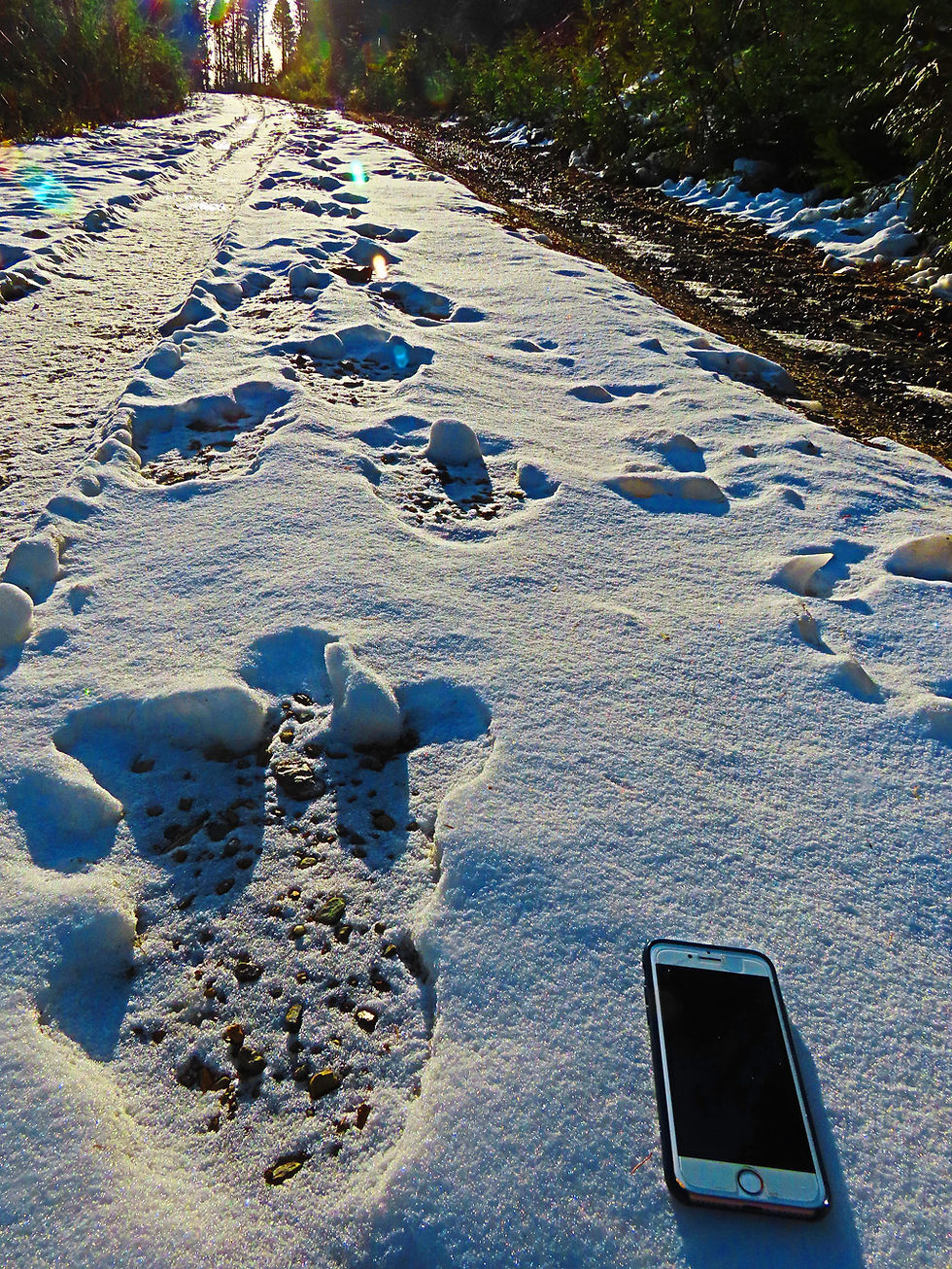
There wasn’t much snow — mere 2 inches, or so, previously wet and mushy, but now frozen hard. My eyes were immediately startled by huge, gnarly-contoured tracks that were obviously made when the snow was mushy, but now they were preserved frozen, except for a faint dusting of the previous night’s light snow. At the start of the snowline the tracks were roughly oval with a length of up to 19”. Their outline, at their start in the lowest elevation where the snow was the softest and wettest when they were made, was sort of jagged indicating that the snow may have been a bit splattering under the footfalls. It is also evident at their start that more than one large individuals were walking in close proximity. They continued up the road following the undisturbed snow between old logging truck wheel tracks, where the going might have been more comfortable. I considered the possibility of the tracks having been made by a man on snowshoes — but this seemed highly unlikely in two inches of snow. This option got further eliminated, when the tracks suddenly veered off the road and climbed into a very steep, high upper embankment where they disappeared in the forest.

I also noticed that more, smaller tracks emerged from the wooded gully below the left side of the road. they paralleled the big tracks for a bit, then peeled off, but aimed in the same general trend.
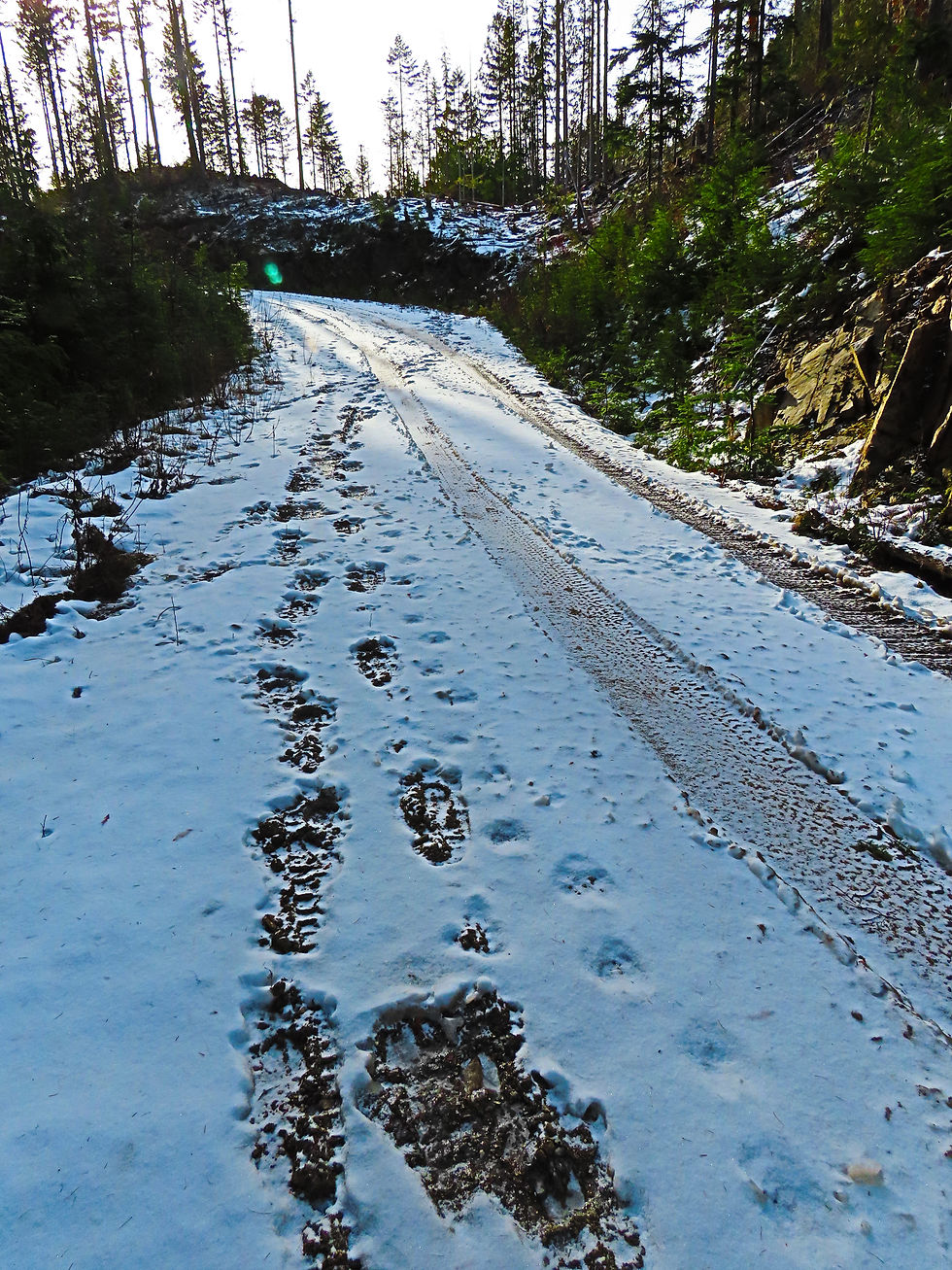
The big tracks vanished in the forest above the road, but a whole bunch of narrower, younger/feminine tracks appeared mostly at the peak of the logging road switchback. They then aimed up into the woods.


After I rounded the tight switchback of the road I suddenly noticed that the big tracks emerged from the forest and turned onto the road again.

It was obvious that the large individual(s) took a shortcut across the switchback through a jumble of post-logging debris — an energy-saving act that would be totally impractical, if not outright dangerous, to a human.
The tracks continued up the road, now significantly better defined in snow that must have been a bit more firm at this higher elevation when they were made and now frozen.


I considered and rejected the possibility of a huge grizzly as a culprit. The reasons for the rejection are that, although a bear can extend its track by placing a hind paw into the print of the front one, these were too huge for the biggest of bears; they were uniform like stamps — bear’s combination of the front and hind would be random; at this altitude, the bears are also very likely to be already in hibernation. Besides that, the prints (although a couple of days old) appear to display toes in their front rather than claws. You can see especially in the “younger” prints at the peak of the switchback (above and below in Fig. A) how the individuals splay their toes — grabbing almost like hand fingers — for a forward grip in the soft slippery footing. Obviously, these are bare feet that were never confined in shoes.
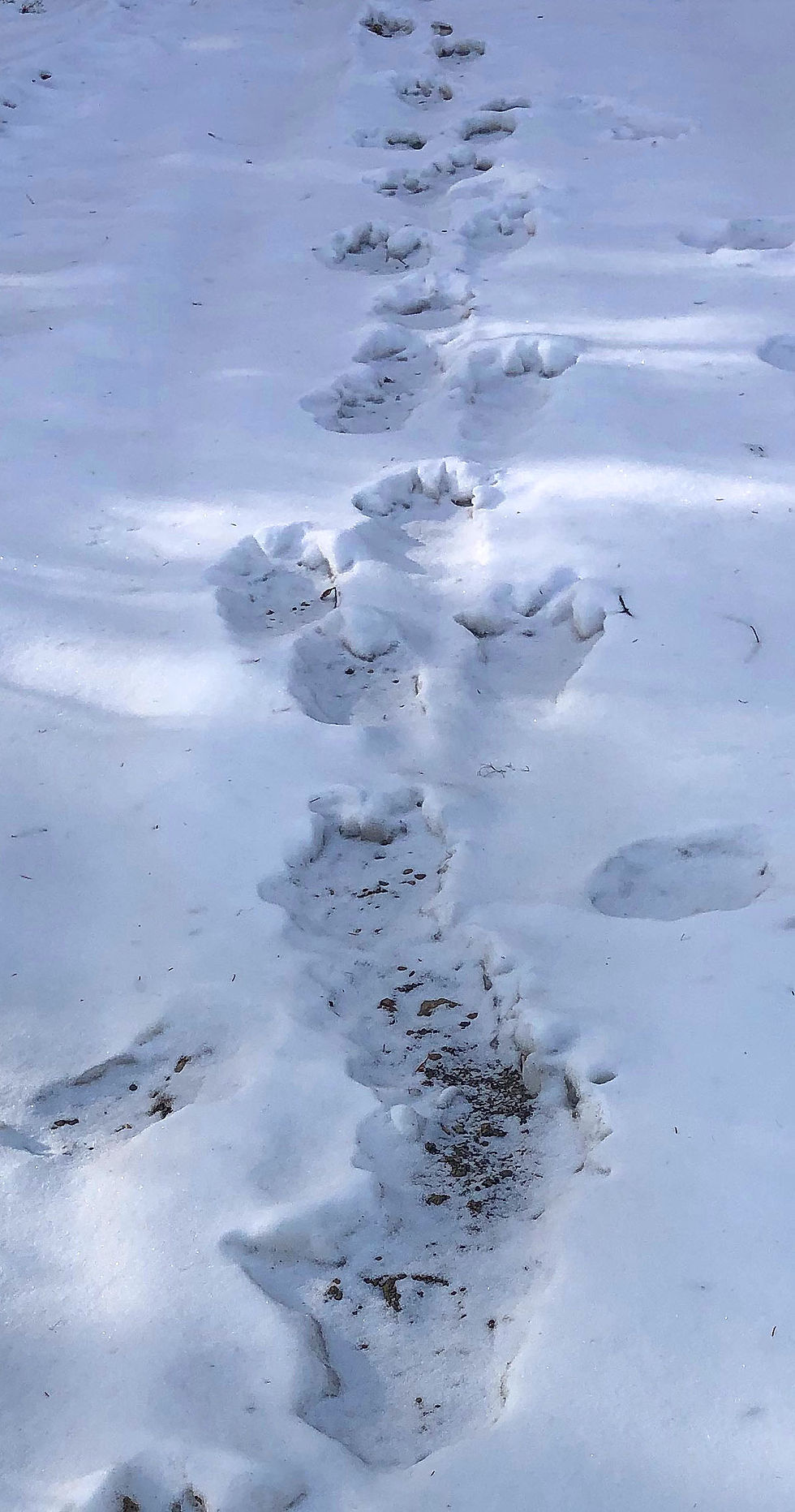
Fig. A
The spread between the big footprints above the switchback would seem short for a Sasquatch, but I have a very strong suspicion that they were made by two large individuals who were walking behind each other. The stride of one thus corresponds to every other print in the two series that also seem a tad offset from each other.

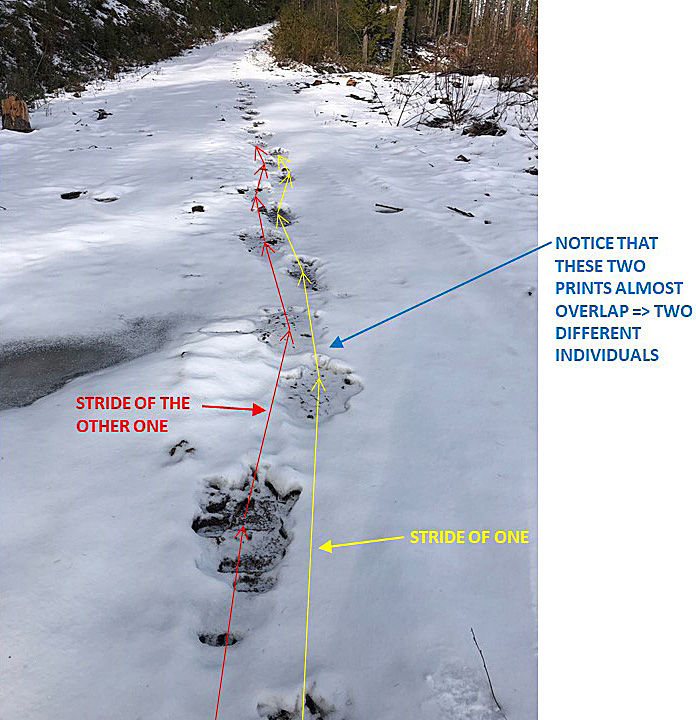
Were they carrying something heavy/bulky between themselves?
The theory of two large bipeds is supported by the start of the tracks at the snowline (see the first track photo above) where it is quite obvious.

Imagine the height and mass of a biped standing in these pads.

Size comparison to my size 11 heavy hunting boot prints:
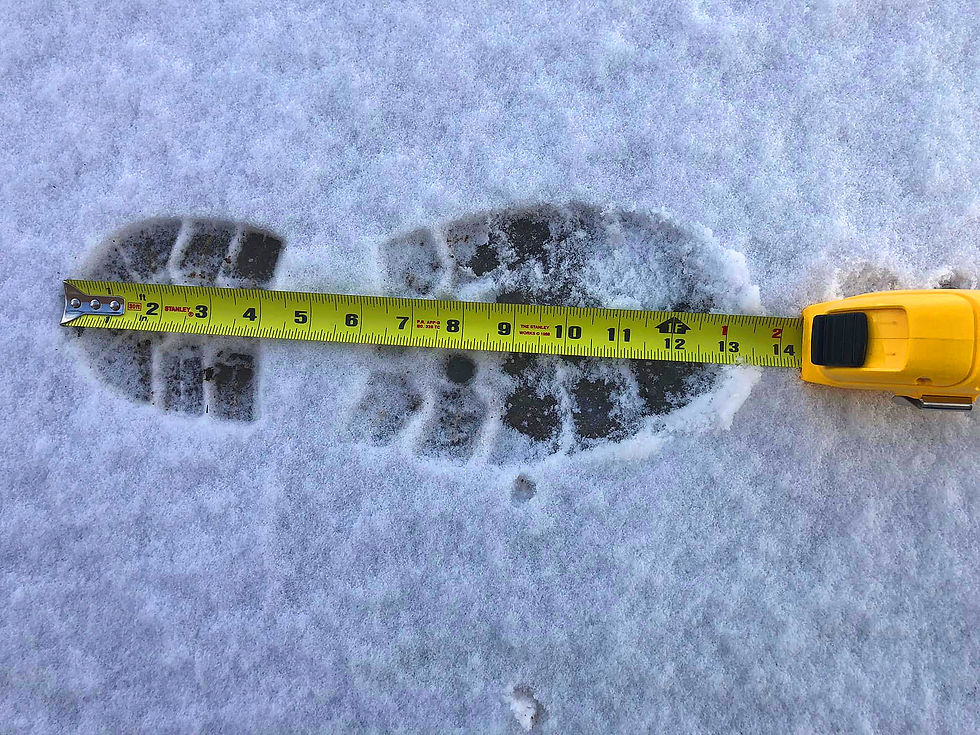
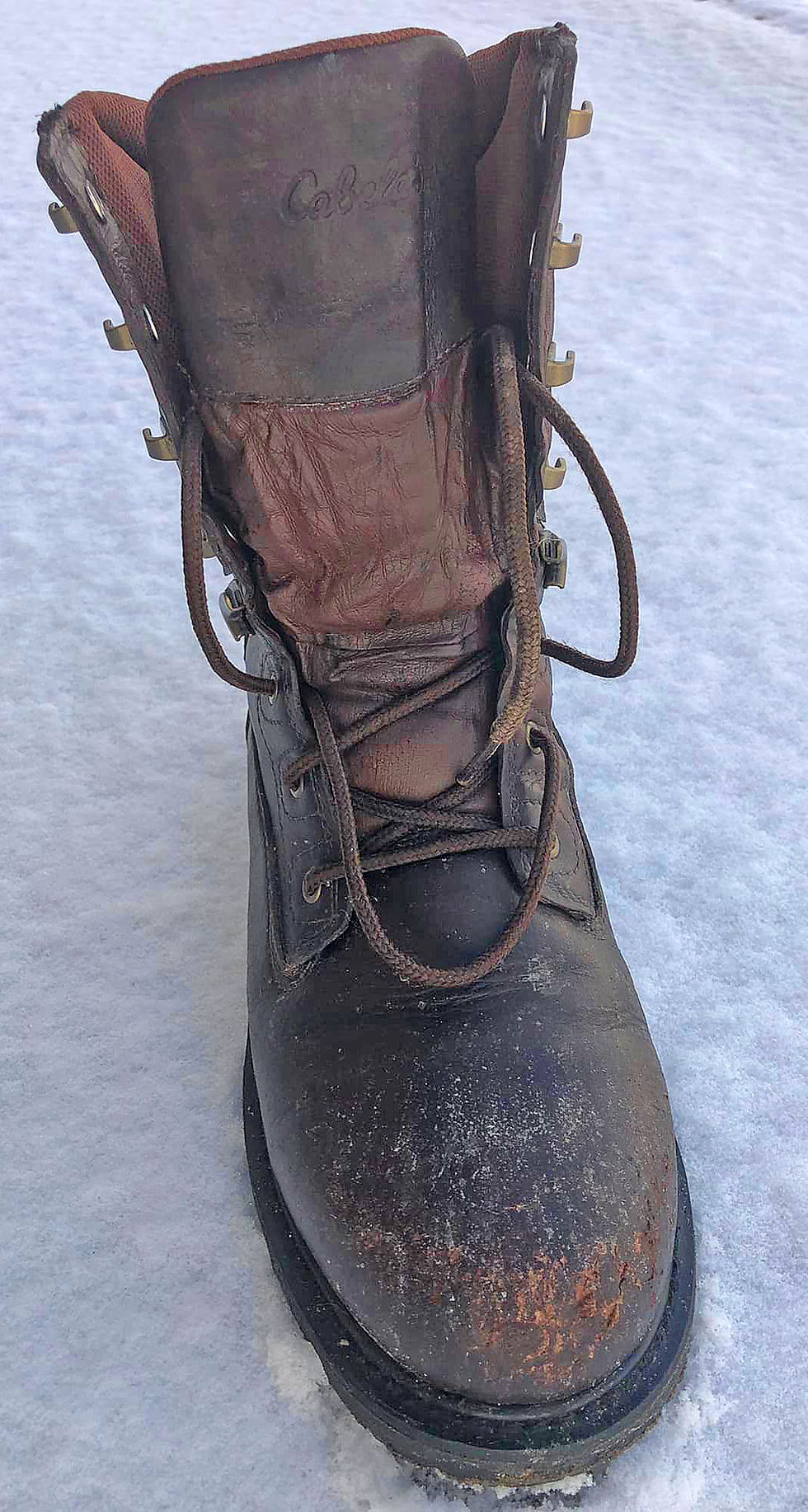
Still higher up on the logging road many of these tracks were merging to one continuous path packed right down to the road. I was the only human in the area since the snow fell that allowed these tracks to be imprinted. I might have been lucky to discover a fleeting record in it of, perhaps, a seasonal move of a whole family clan to some wintering location. The following evening everything was blanketed with thin layer of fresh snow. I revisited the area after five days only to find no big tracks anymore, only a ton of elk traffic.
My continuing post-analysis:
While at first I was in shock having a hard time to believe my unexpected discovery, the more I analyzed many more photos that I had taken and had more time to think about it, the more convinced I have become that the tracks could not be explained by anything else than my proposed Sasquatch theory. Here are my proposed interpretations:
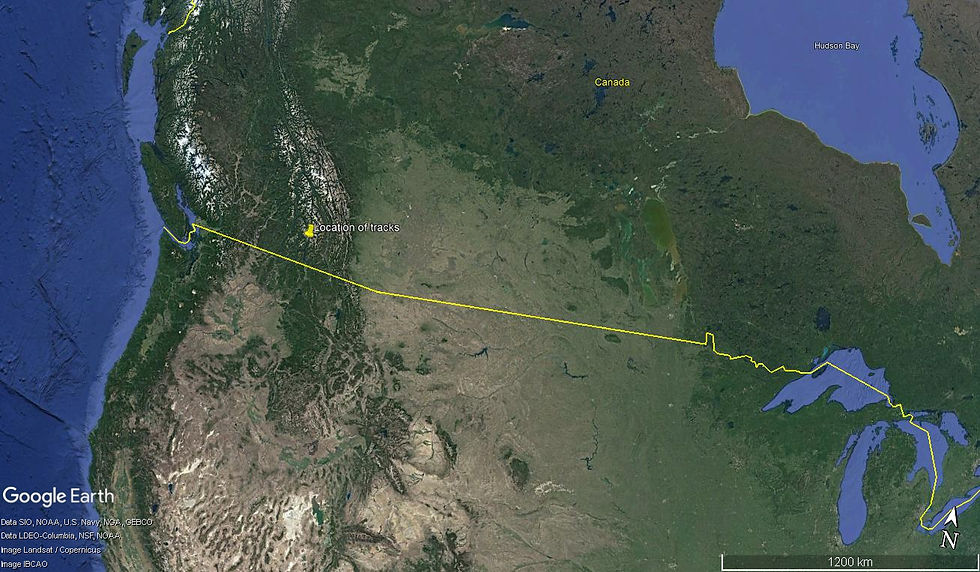
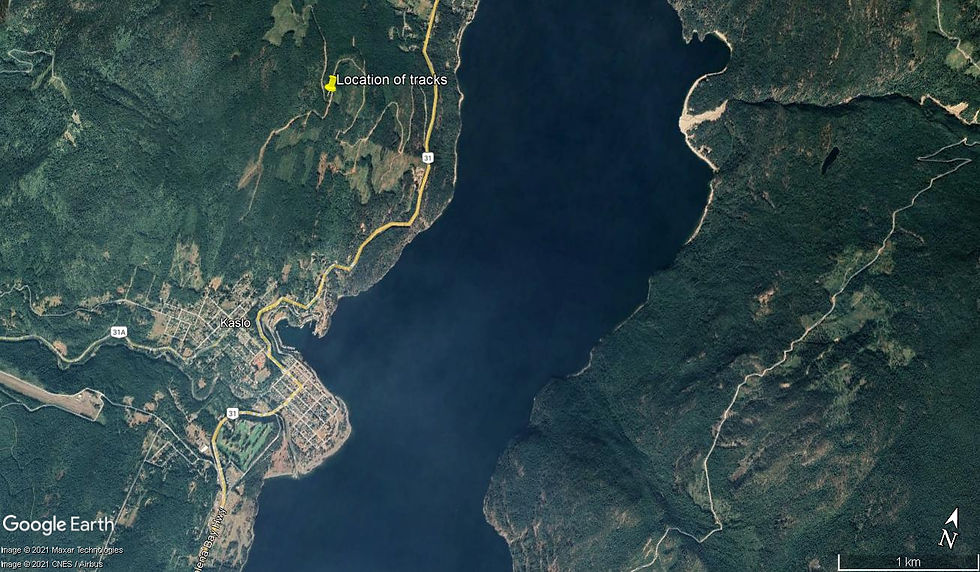
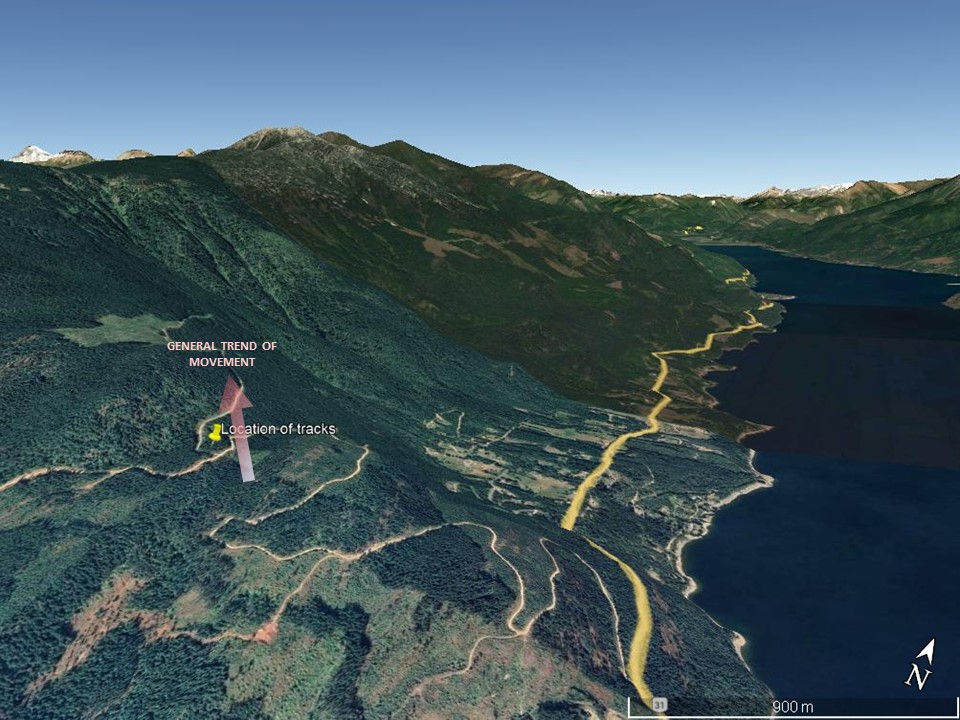
The true physical topography of this region is much steeper and more rugged than it is apparent in this flattened Google Earth view.
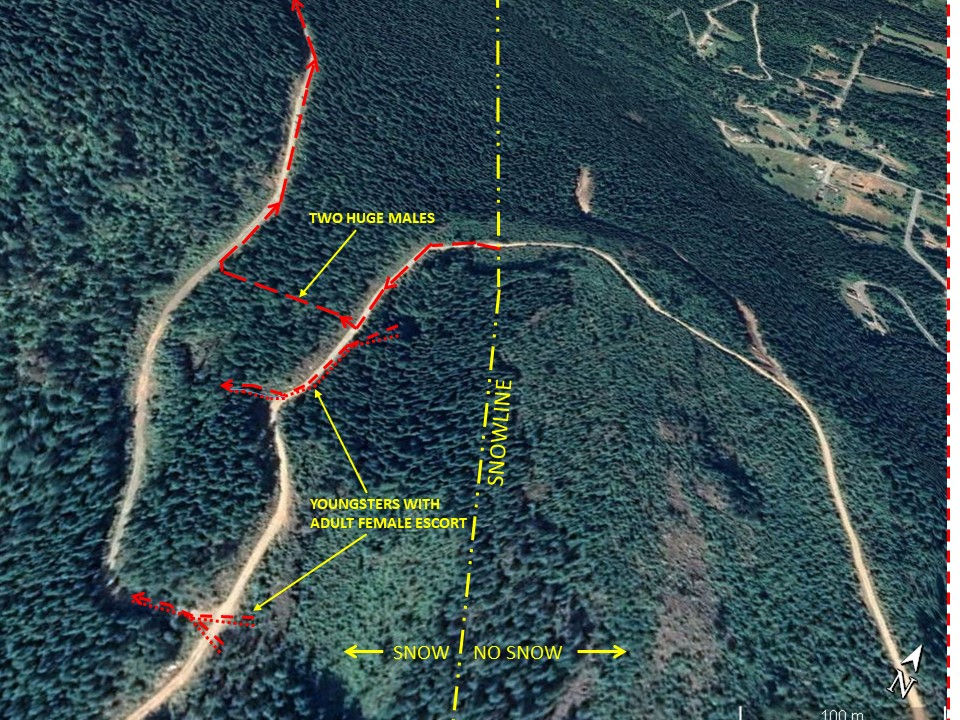
A map of the various groups of tracks found above the snowline. Notice the shortcut across the switchback of the logging road that the two large males took. Notice also that the tracks of what appear to be young ones with adult female escorts emerged from and disappeared back into a rugged forest.
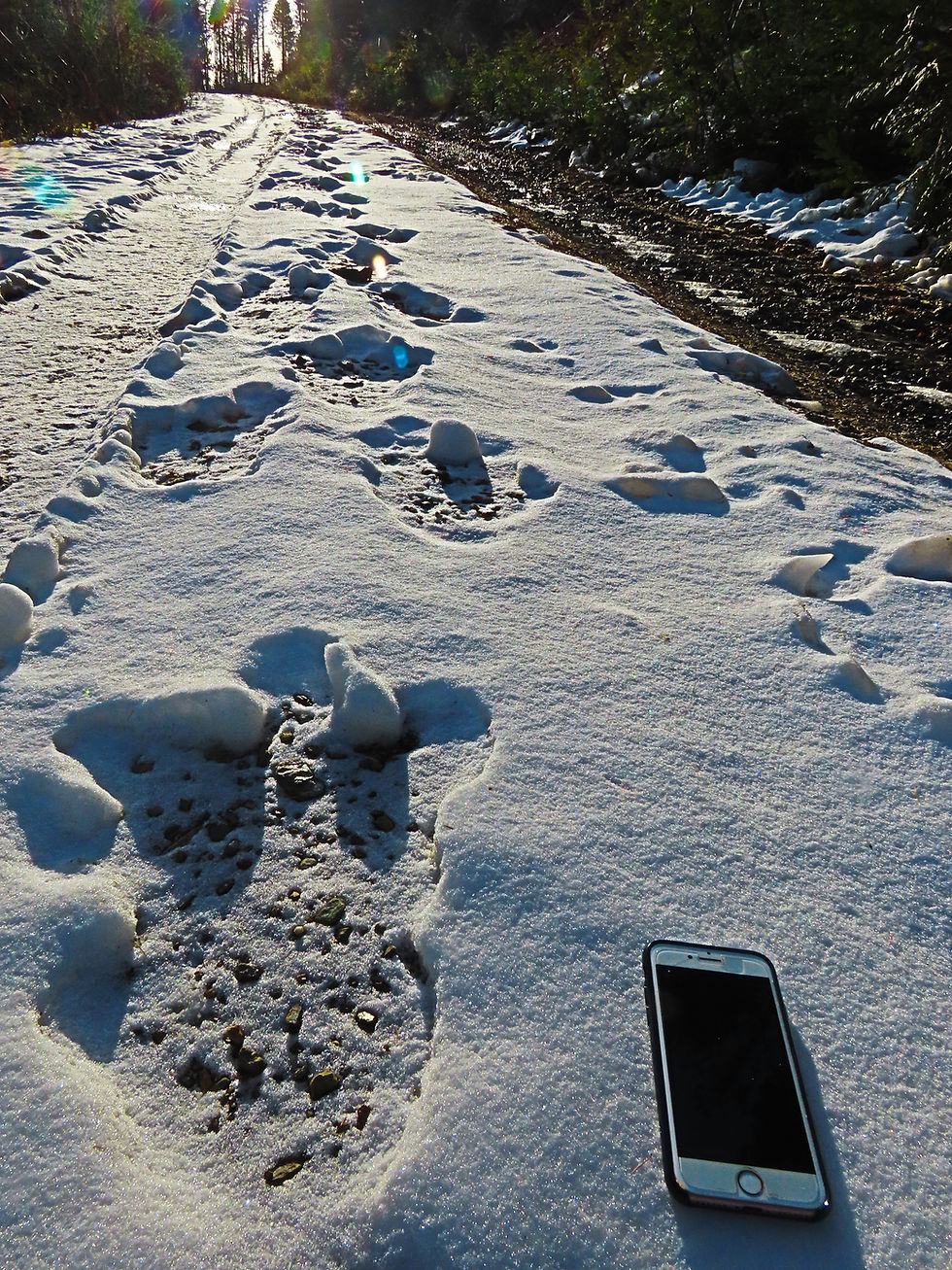
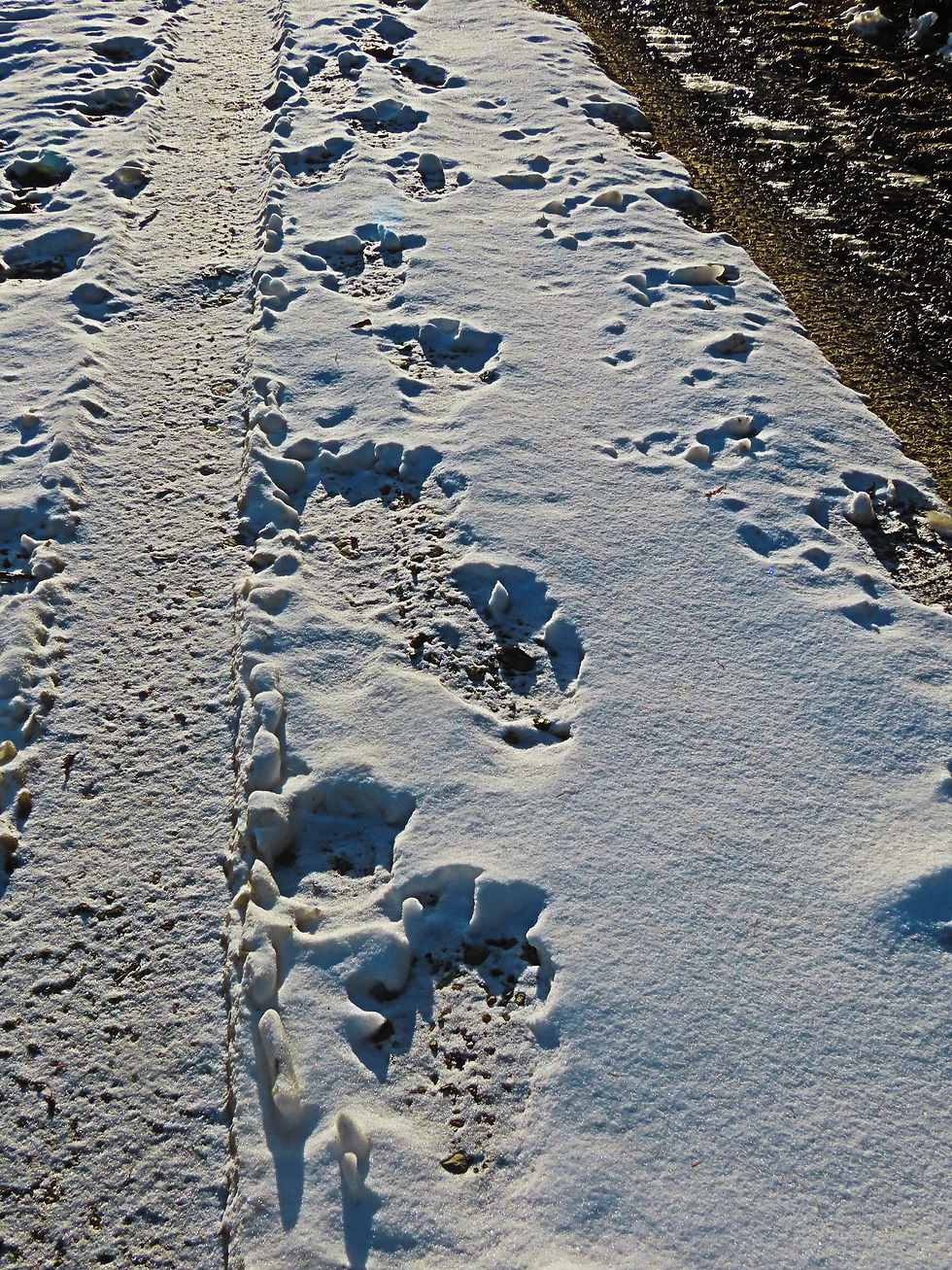
Right at the start of the tracks at the snowline it is clearly evident that more than one large individuals walked together up the road as documented by the above two photos. As the large individuals just emerged onto the road from a wet snow-covered bush their lower legs must have carried mukluk-like packs of stuck-on snow. They might explain the jagged splatters of their initial foot fall imprints. (I used my camera until its battery died. Luckily I was able to continue picture-taking with my IPhone - to explain the mystery of the two objects used to show the scale). (Evident also is that one pass of a logging truck occured between the time the tracks were made and the time I found them. They obliterated some of them, but only on the lower part of the switchback).
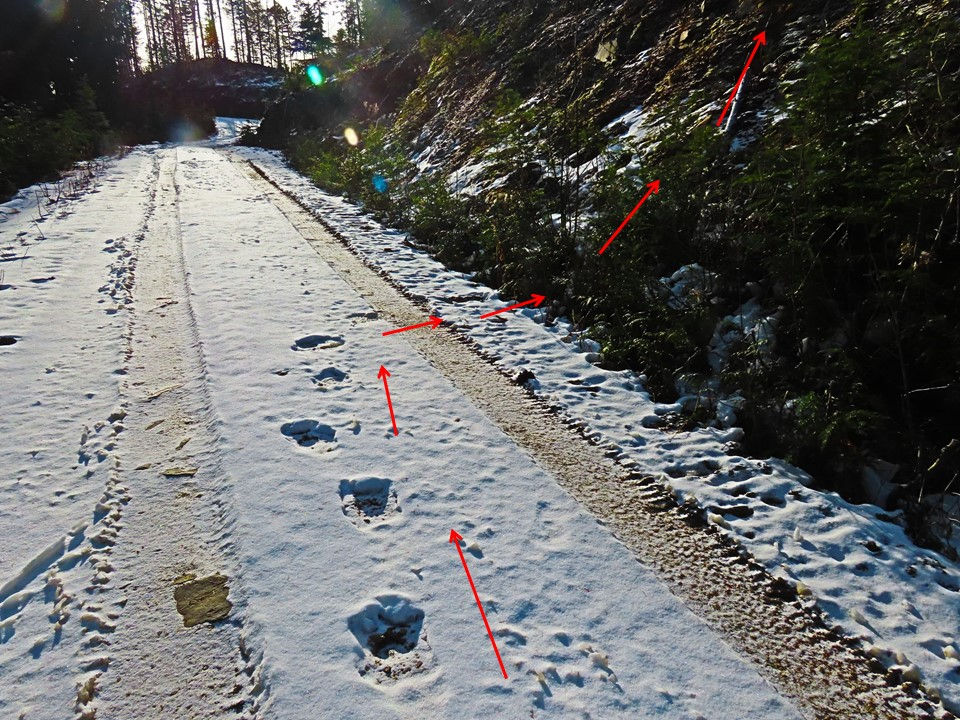
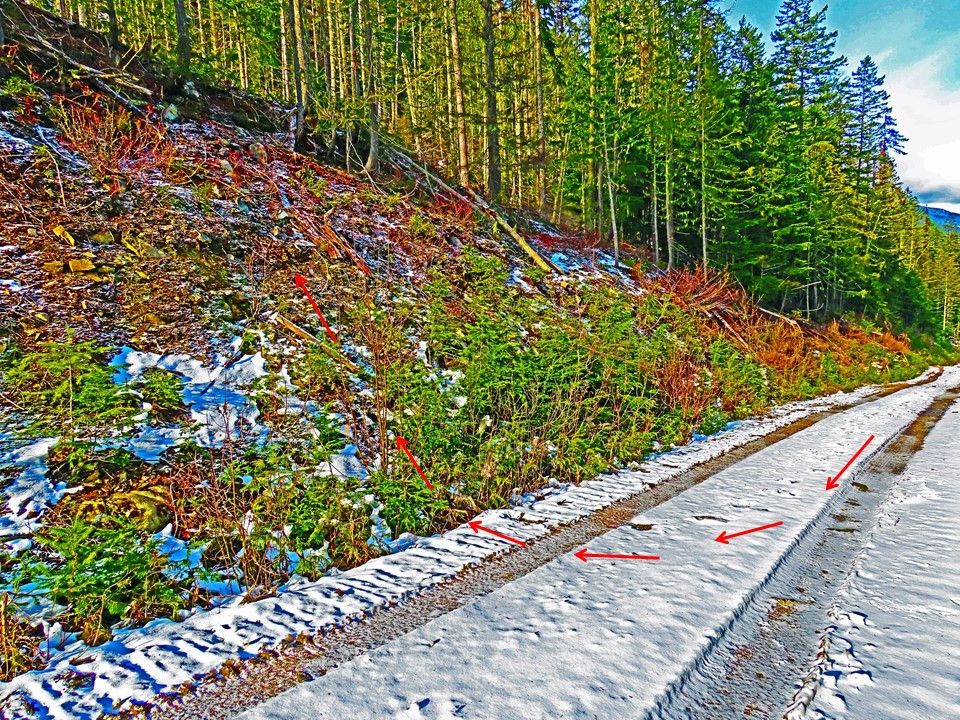
The above two photos show where the large tracks left the road and climbed into a very steep, high embankment to take a shortcut across the switchback of the road. (I.e. - no man on snowshoes).
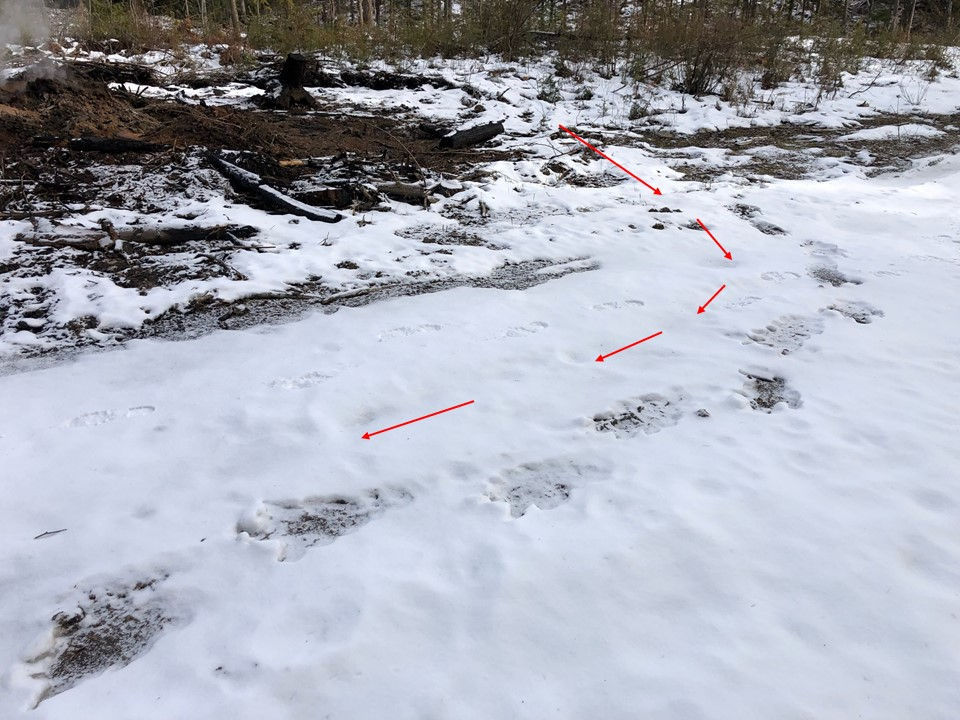
This is where the big tracks re-emerged from the woods after shortcutting the switchback. Obviously, the beings had to be familiar with the area to know that they could make this shortcut. They were not moving here for the first time.

These photos show the tracks of the first presumed group of youngsters with adult female escort. (Above the snowline, but below the peak of the switchback).
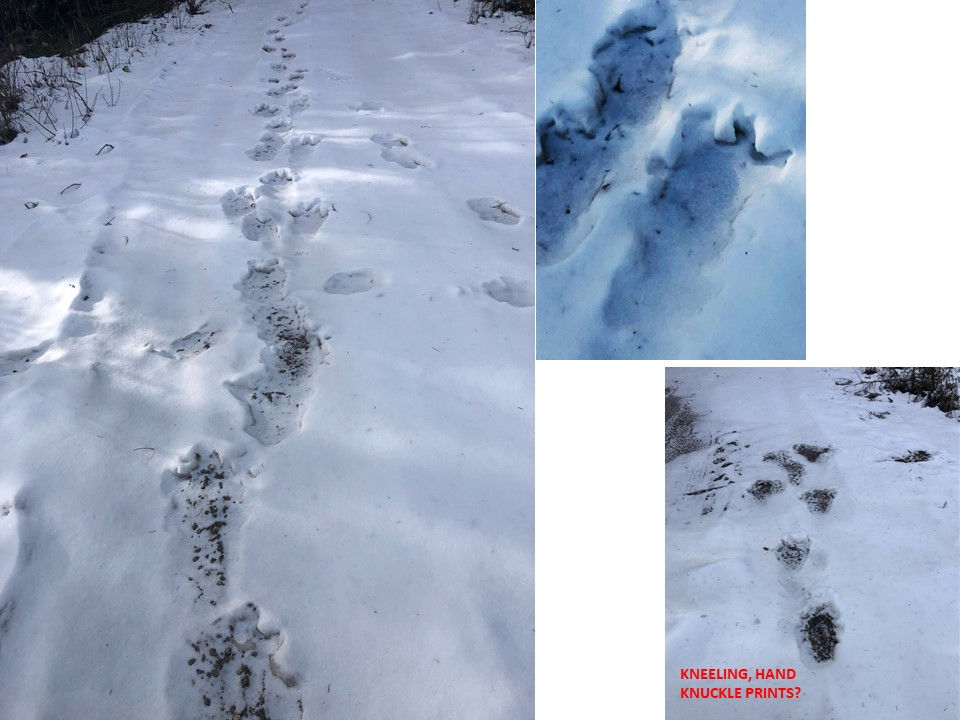
These are images associated with the second group of youngsters with female escort at the peak of the switchback.
See the thought near the end.
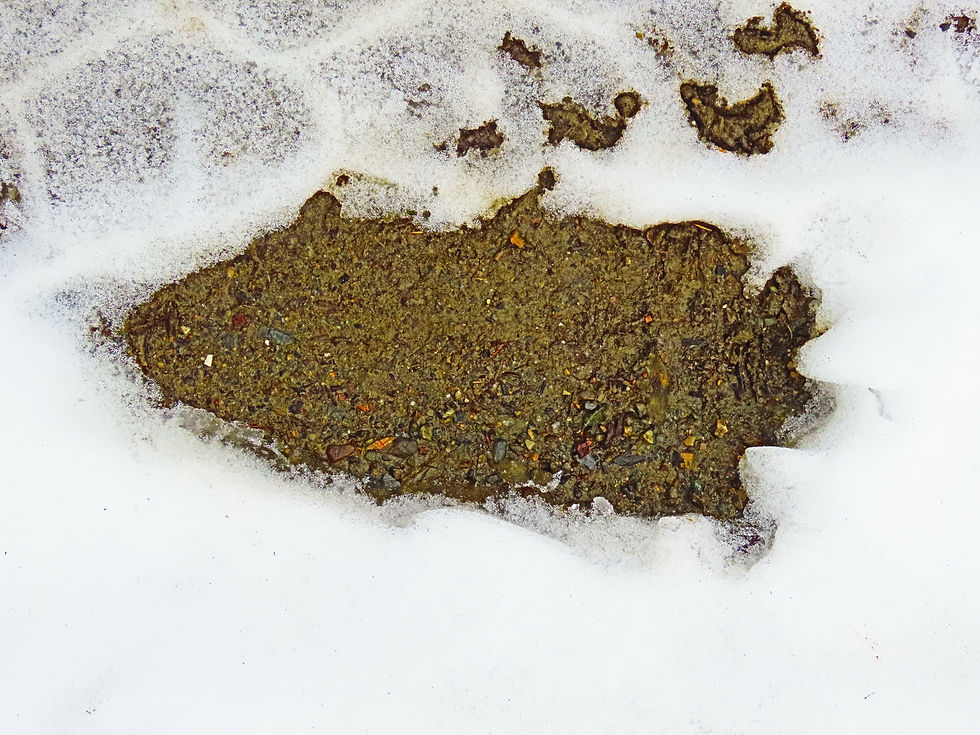

I originally neglected the above two pictures that I had also taken at the very start of the snow on the road considering them inferior to the huge prints next to them. They are smaller than them (here partially obliterated by tires of a logging truck). Could they be female tracks? However inferior the appearance of these prints they are important in that they clearly show toe imprints rather than claws in their front. The fact that the whole lower legs were saturated with wet to liquid snow dripping from the hairs as the feet moved forward may account for the strange sharp trailing lines extending from the sides and from the toes of the print.
From Google Earth I can see that the spot with the tracks happens to be only a kilometer as the crow flies from our house. If this were really Sasquatch, I indeed had them in my backyard after all.
Yet another thought:
It can be observed in the photo above and especially in its closeup Fig. A that many small prints lack a pronounced imprint of the heel, the heel is lifted, or it is missing. Could it mean that the really young ones, perhaps, moved quadrupedally (on all fours) in which case the heels are lifted and the front limbs walk on hand knuckles? According to many witness reports this trait is typical for the Sasquatch youths.
I also found an image that I took within 200m of the above snow tracks a month earlier in October 2021. I did not make any conclusions at the time other than taking a picture as of a curiosity:
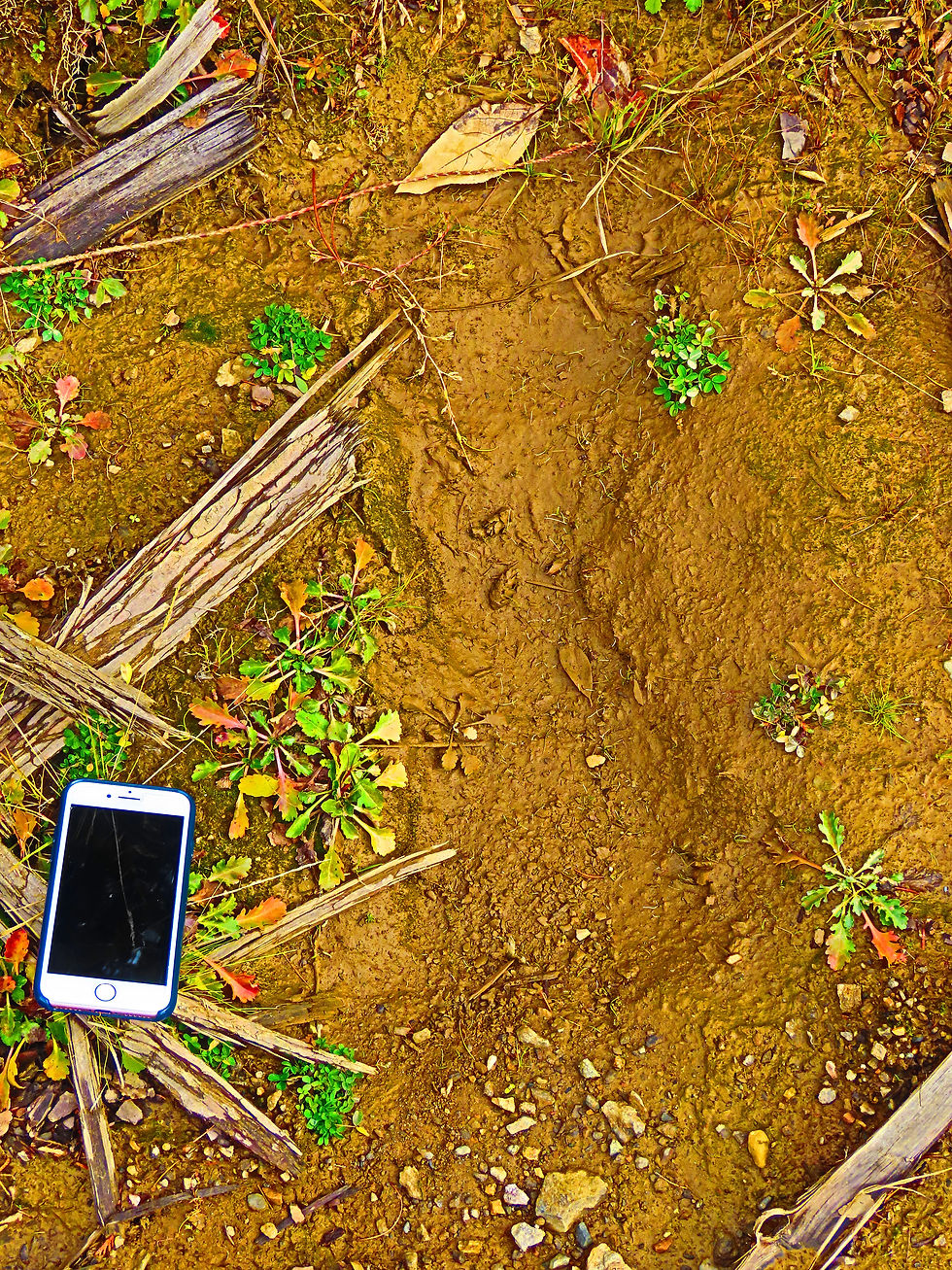
Another addition (2022):
I have visited the area of my last year's track discovery several times during the following spring and summer. The conditions were dry and I never discovered any tangible Sasquatch evidence. The only curious event was that when I rounded the second last switchback of the logging road below the area as I was ascending on foot and emerged into a direct line of vision to the tree tops of the area of the track discovery I immediately heard three distinct tree knocks from that distance. It seemed so obvious that I turned towards the source of the sound, raised my arm and called: "Hello friends!" A tree top sentry warning the community of a human's approach?
However, I visited the area again on the 10th of November this year (2022) in very much the same conditions as pretty much exactly a year ago (snowline of 2" of frozen, previously wet, but now frozen snow starting around the same altitude). I saw almost no tracks, except for a few elk tracks and this conspicuous print that was near the edge of the logging road. I did not find any associated prints to indicate a track that could corroborate it.
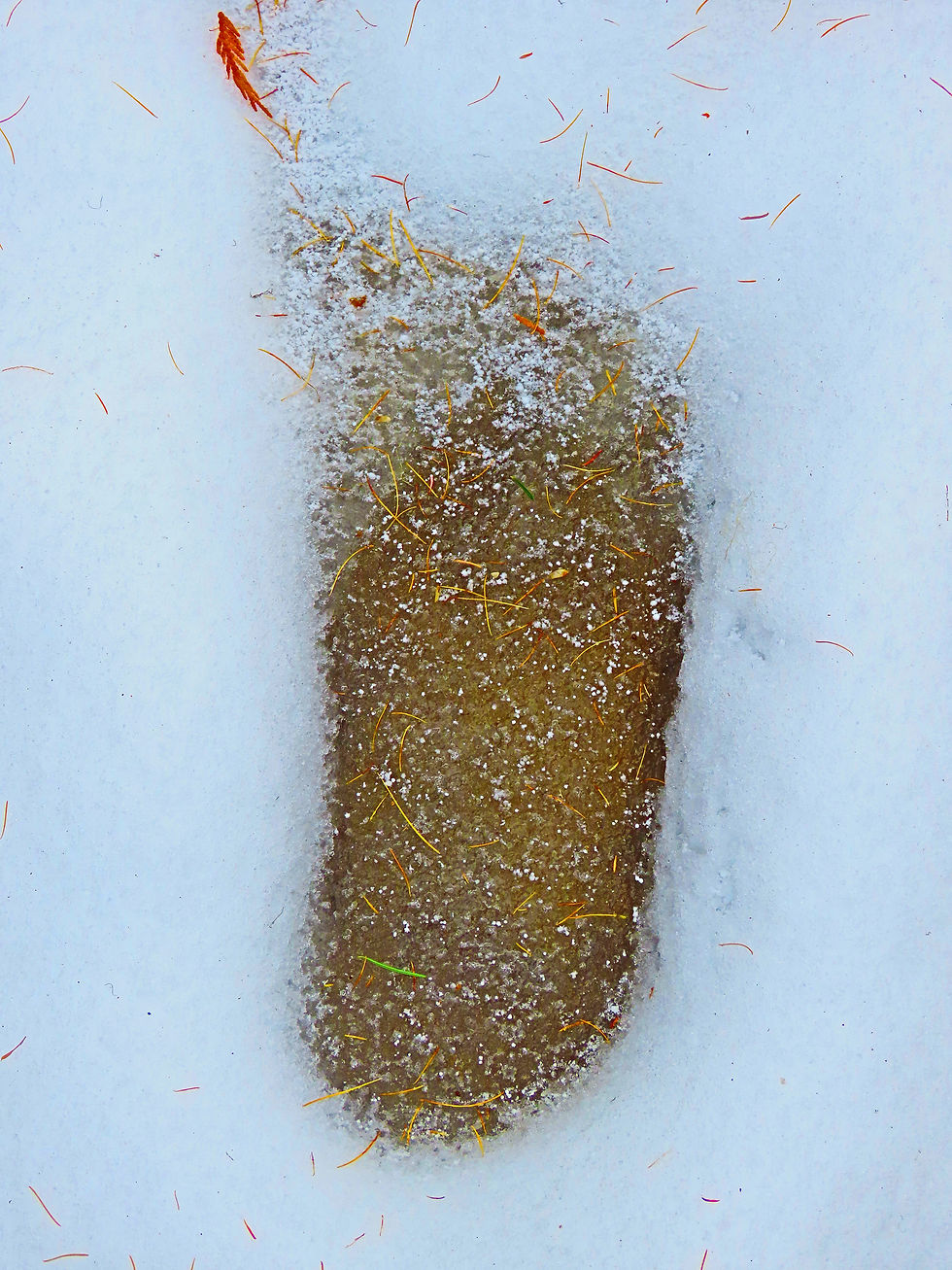
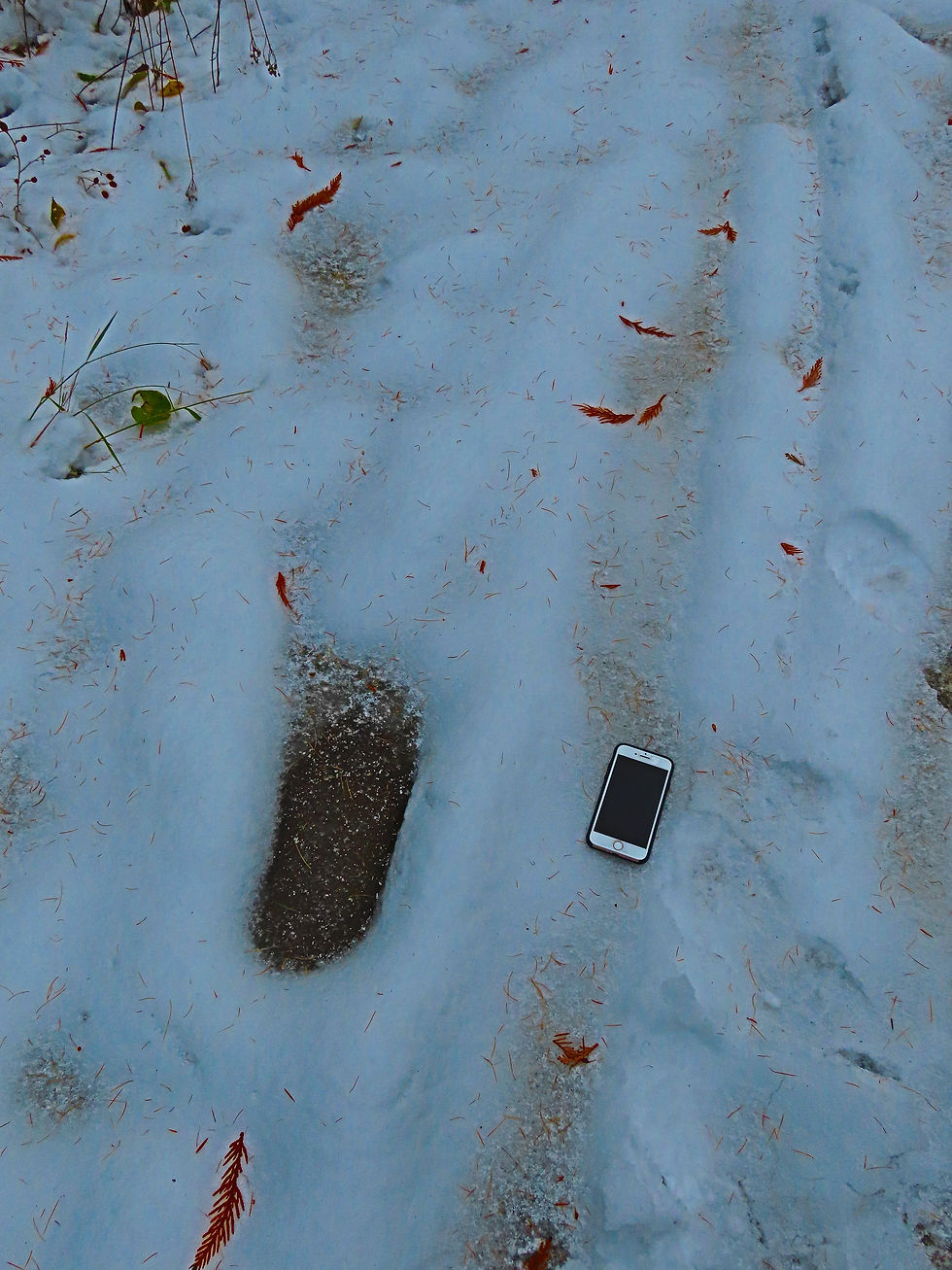
Here is my IPhone 8 for the scale.
One more curiosity: We left our log house in August 2022 for three weeks. Before our departure, I reset our three game cameras with fresh batteries. I decided to move the Moultrie camera behind the house higher up on its mounting tree. But, as we were in a hurry for the departure, I omitted to check its aim. After we returned, I discovered that it was aiming too high, missing all four-legged animals over their backs. None had registered. Except for this enigmatic image that is highly puzzling to me. I don't make any claims, or suggestions. You tell me what you see in it.

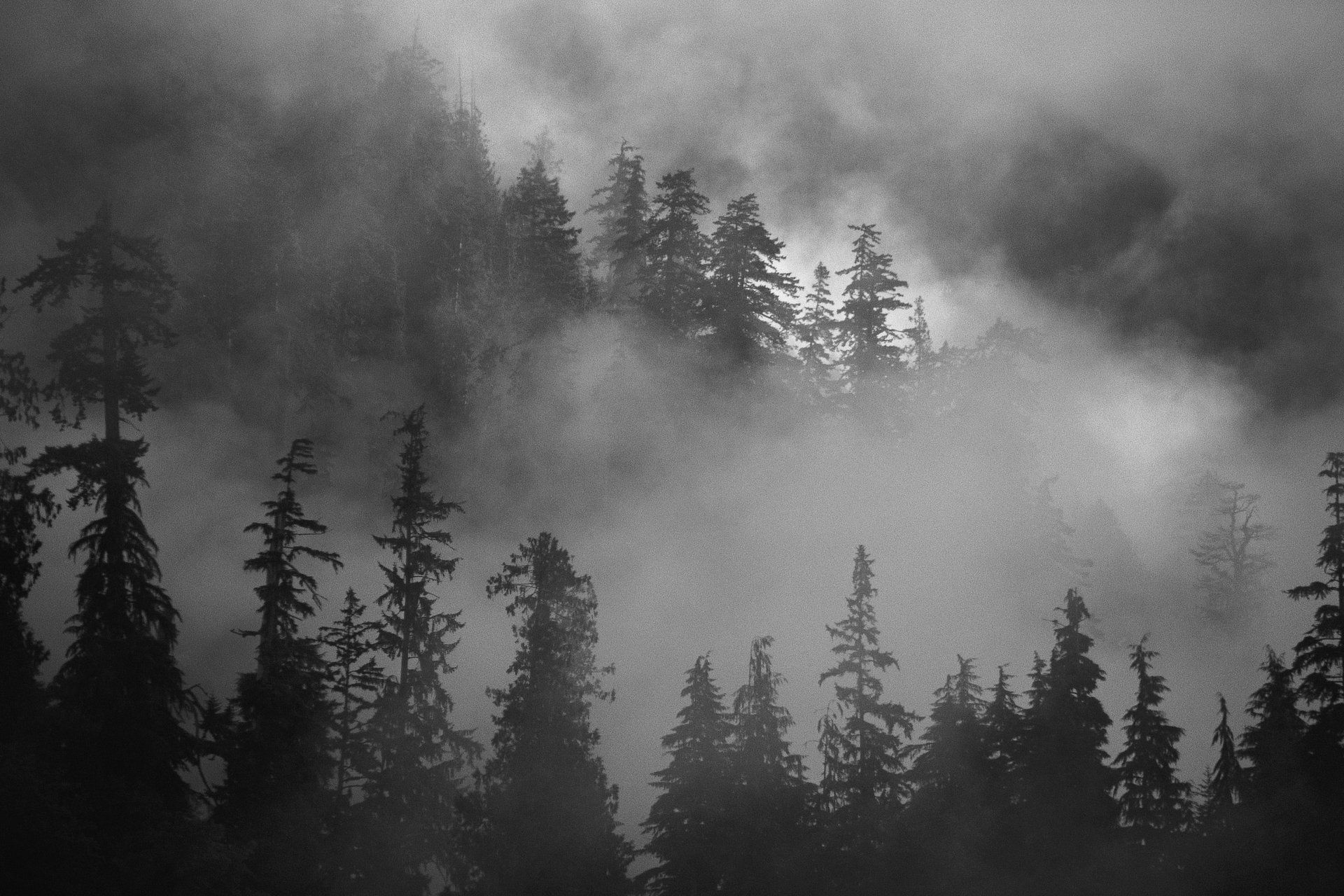






















Comments